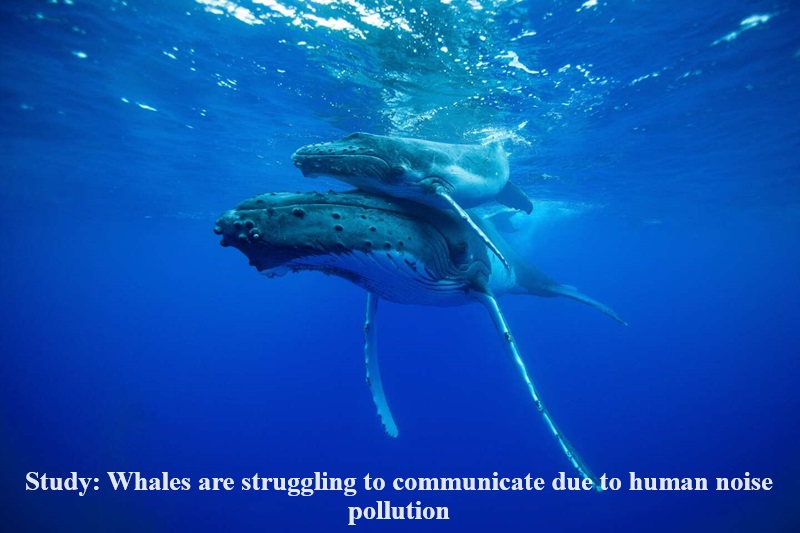
Humpback whales have developed a distinct method of communication within their species, but the cacophony of human-generated noises is disrupting this process significantly.
A recent study featured in the journal Nature indicates that anthropogenic sounds can easily overshadow these unique whale vocalizations, which are confined to a specific frequency range. Coen Elemans, the study’s lead author and a professor of bioacoustics at the University of Southern Denmark, noted the unprecedented nature of this adaptation, emphasizing that it enables large whales to vocalize underwater while holding their breath.
Despite their remarkable physiological capabilities, these marine mammals are incapable of evading the pervasive noise pollution caused by human activities in ocean environments, Elemans lamented.
Whale songs, comprising intricate melodies, play a crucial role in the social and reproductive interactions of these colossal creatures, scientists assert.
In their research, scientists scrutinized the larynxes of three baleen whale species—sei, minke, and humpback—using modeling techniques and scanning to reconstruct the mechanism behind whale vocalizations. Their findings revealed that the sounds are generated through “aerodynamic vibrations,” enabling whales to vocalize without inhaling water.
It was observed that baleen whale sounds can traverse vast distances underwater, reaching a maximum depth of 100 meters (330 feet) and a frequency of up to 300 Hz, which coincides with the frequency range of noise emitted by maritime vessels.
The overlap between baleen whale vocalizations and human-generated noises, particularly from shipping, is disconcerting, Elemans remarked, highlighting the whales’ inability to adjust the volume, frequency, or depth of their vocalizations to mitigate the impact of anthropogenic noise.
The resultant noise pollution can prompt alterations in whale behavior, compelling them to either remain silent until the noise subsides or relocate to quieter areas. These adaptations demand additional energy expenditure, potentially compromising the whales’ physical condition and long-term survival. As such, mitigating human-induced noise pollution in marine environments is imperative for the conservation of baleen whale populations.

Post Your Comments